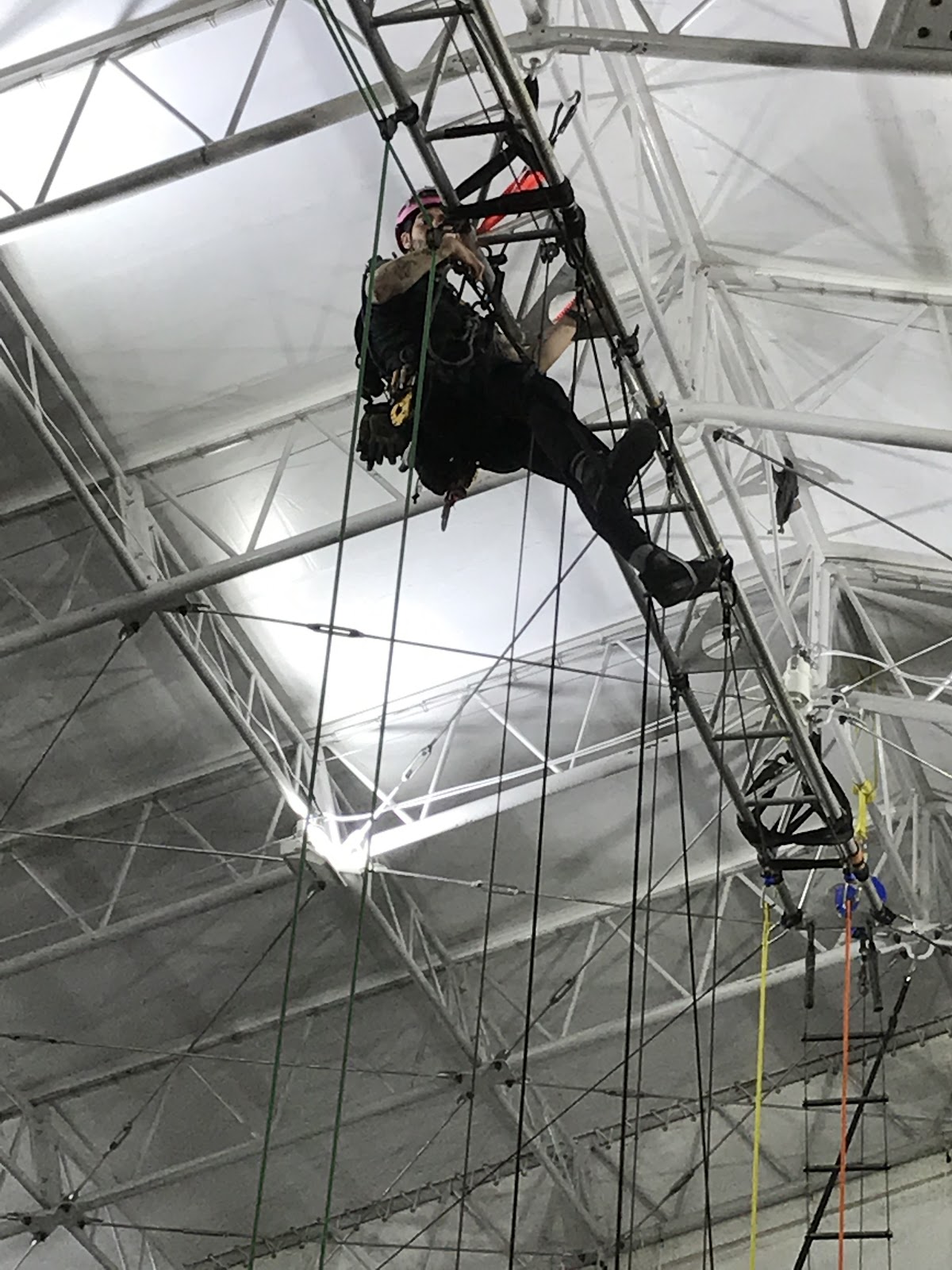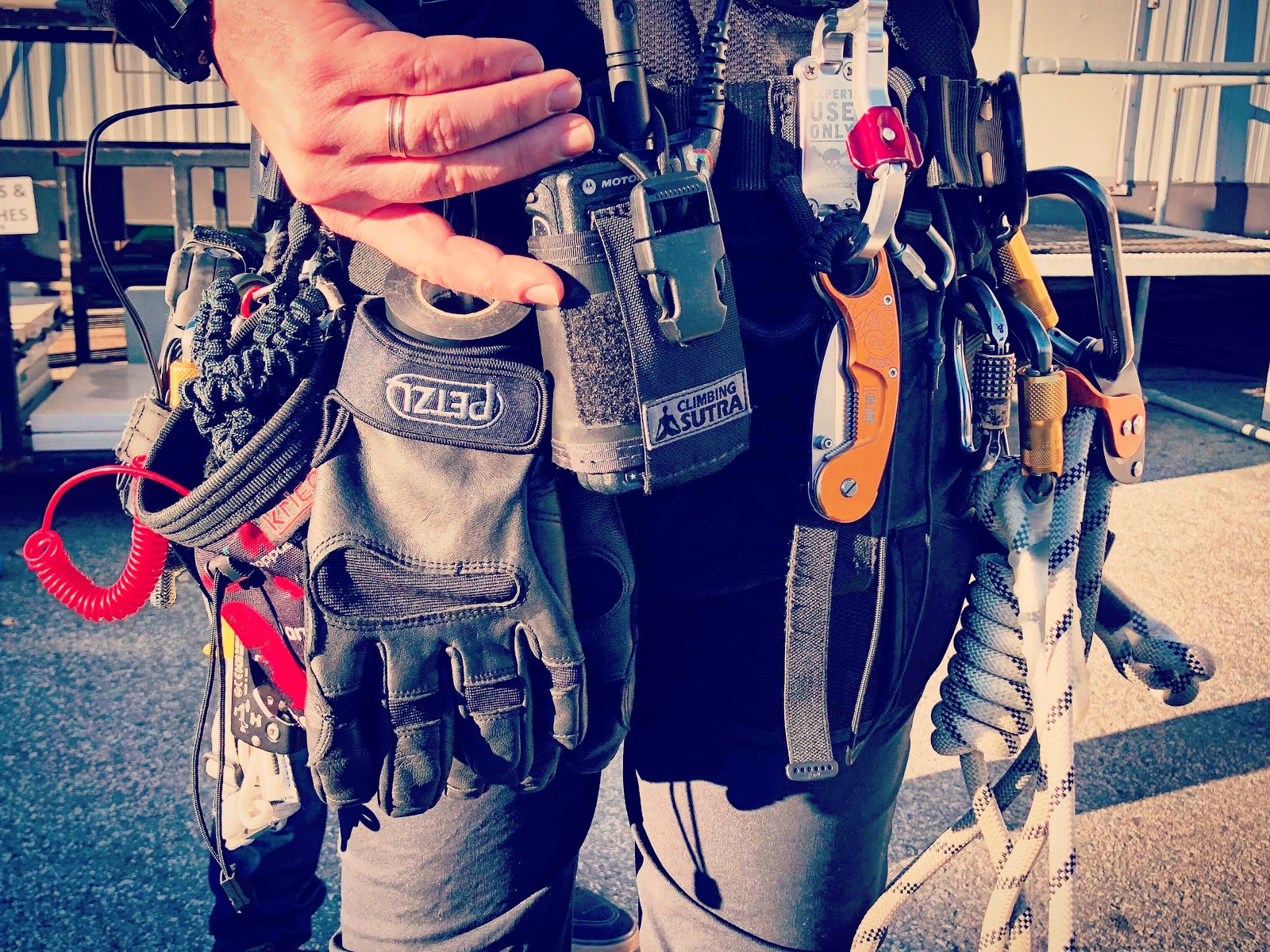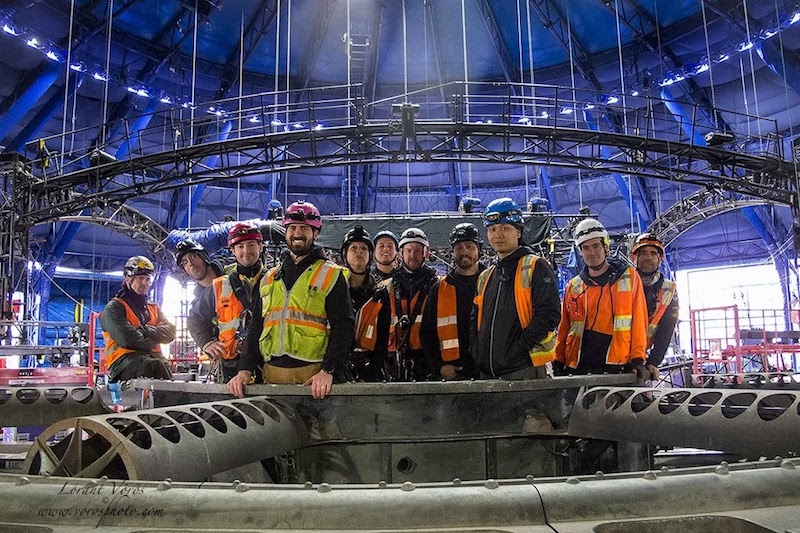“Certification” Versus “Experience” for Acrobatic & Circus Riggers
I often get asked if I am a “certified circus rigger”. This question typically comes from individuals and programs looking for small-scale rigging. When I say small scale, I am referring to individual performances, corporate events, one-off gigs, and aerial or circus schools/studios. I do my best to explain that what they are looking for is a “competent” or “experienced rigger”. By phrasing the question for a competent rigger, the asker is including experiences a rigger may have gained from on-the-job training or apprenticeships. Certifications give a rigger proof of continuing education in their field, and this is very important, but there are many lessons learned on the job site that cannot be learned through a course or test. The question changes from “Are you a certified rigger?”, to “Are you a competent acrobatic rigger with experience in rigging circus arts?”

Understandably, there is a sense of safety and security that comes along with hiring someone certified to do their job. A doctor spends years in school, and auto mechanics learn their trade-in mechanics programs; I wouldn’t attempt my own surgery, and though I know my way around a car, I still take it to the shop for an oil change. However, acrobatic (or circus) rigging is still very much learned through apprenticeship and on-the-job training. Every show, theatre, tent, and act holds different challenges for a rigger. Trying to encompass everything you might encounter when rigging a circus act into one course would be almost impossible; there will always be site-specific hurdles to overcome. Most of the common certifications that circus riggers carry show broad, general knowledge of loads and forces (hanging things overhead), and not human dynamic loads like we see in the circus ring. These certifications give a rigger the building blocks of rigging, but to fly people there is more.
Very few companies manufacture rigging equipment specifically for acrobatic purposes. In the circus we borrow from sailing, climbing, mountaineering, the construction industry, and anywhere else that we can find hardware, soft goods, and materials that fit our needs. Our shackles, carabiners, swivels, pulleys, and ropes all come from another background. Much like our gear, circus riggers come from various backgrounds. Many riggers come from theatre, climbing/mountaineering backgrounds, sailing, oil rigs, and arbory. When hiring professionals in any industry, people want proof that they are hiring someone educated in that field. Circus riggers may have certifications on their resumes to exhibit broader knowledge of rigging beyond the shows and events they have worked on. Outlined here are just a few certifications you may find on an acrobatic rigger’s resume, and what those certificates mean.
A Small Sampling of Certifications
Certification requirements vary from country to country. While the Occupational Safety and Health Administration (OSHA) in The United States does not require an acrobatic rigger to hold any specific certifications, Australia, for example, requires entertainment riggers to go through the Theatre Safe Australia program, which licenses entertainment riggers. Minimally, an entertainment rigger in Australia needs to obtain what is called a Dogger’s License. Dogging allows a rigger to “[Hang] technical elements (lighting, sound, AV equipment) from a hook clamp, attaching cloths, drapes, banners, attaching scenery with a dedicated attachment point, attaching styling/design elements, attaching or running cables.”After dogging, there are basic, intermediate, and advanced rigging licenses. Not until you have your advanced license in Australia are you allowed to rig performer flying or circus acts.
Acrobatic (or circus) rigging is still very much learned through apprenticeship and on the job training.
IRATA, the International Rope Access Trade Association, is an internationally recognized training and certification program for rope access. Rope access is defined by the U.S. Department of Interior – Bureau of Reclamation as “Techniques by which access is gained to structures (e.g. buildings, radial dam gates, bridges, penstocks) and geologic features (e.g. cliffs, steep slopes) where ropes are the primary means of support, positioning, or safety protection.” (guidelines– Chapter 2, pg. 2). Skills learned in a rope access course lend themselves extremely well to circus and acrobatic rigging. Through the various certification levels, technicians learn how to set anchors and ropes, choose and inspect the proper equipment, and a variety of rescue techniques. These courses are not intended specifically for acrobatic riggers. A certified rope access technician will typically look for jobs in the wind turbine industry, oil rigs/off-shore drilling, and window washing/building facade maintenance. However, a rope access course and certification is extremely valuable to an acrobatic rigger. You learn about rigging systems intended for dynamic human loads, rescue scenarios, and how to access areas that may be more difficult or impossible to reach without using these techniques. Pick off, or suspended rescue, for example, is highly applicable when there is a need to access and retrieve an aerialist who may be stuck over the stage. This situation can arise during a power loss if the aerialist is on an electric lifting system, or if an aerialist becomes tangled in their apparatus and unable to free themselves. Rope access knowledge also lends itself well to being able to set up unique artistic visions in very unique locations and assess high-risk situations in a calm and calculated manner.

When it comes specifically to entertainment, PLASA, or Professional Lighting and Sound Association, along with ESTA, Entertainment Services and Technology Association, have published the International Code of Practice for Entertainment Rigging, and Entertainment Technology—Performer Flying Systems (ANSI E1.43 – 2016). These standards have been adopted by ANSI, the American National Standards Institute; however these standards do not constitute law, per se. “ANSIis a private, non-profit organization that administers and coordinates the U.S. voluntary standards and conformity assessment system.” This means that ANSI recommends best practices to OSHA, who in turn cite these standards as best practices in their industry. The International Code of Practice goes over pre-install and planning, drawings, equipment, onsight, and show rigging work, lifting operations, and post-production operations. While the code of practice mentions riggers and crew, it does not mention specific certifications, it only requires to “confirm that all crew have valid licenses/permits for the tasks they will undertake as required” (4.2.3). Most of the time these licenses deal with the use of high-reach equipment (scissor lifts, “cherry pickers”, and forklifts, but not rigging licenses).
PLASA offers a rigging certification called the NRC (National Rigging Certification). NRC is a UK-based certification, though it is not a requirement if you want to rig in the UK. There are 3 levels of NRC, and their training covers workplace health & safety, rigging installations and operation, working at height with fall protection equipment (not including rope access), sling use, chain motor use, and other various entertainment rigging related activities. A level 2 NRC rigger is able to rig on their own, without supervision of a level 3, and a level 3 NRC rigger is allowed to supervise. This training and certification is an excellent way for an employer to see that an individual has studied the appropriate materials and shown an understanding of entertainment rigging. However, the NRC website clearly states: “The NRC does NOT assess or qualify riggers in the following areas”: “Performer flying or automation; Theatre flying and rigging; Rescue methods or planning,” among other areas. Performer flying and rescue methods and planning are two key elements of circus rigging, and this certification does not cover them.
Like PLASA, and the NRC in the UK, U.S.-based ETCP, the Entertainment Technician Certification Program offers certification for a handful of entertainment-related skills. This includes certifications for Entertainment Electricians, Portable Power Distribution Technicians, and Riggers. The rigging certification is split into two, one for arena rigging, the other for theatre rigging. Per ETCP’s website, “The Theatre Certification encompasses rigging that employs the use of counterweighted systems, mechanical systems and hydraulic systems, usually, but not always, permanently installed in facilities for the use of theatre technicians in the execution of their rigging responsibilities.” “The Arena Certification encompasses rigging that employs chain hoists and truss systems to temporarily suspend objects from overhead structures in any environment. ETCP recognizes that these methods and hardware are used throughout the entertainment industry in arenas, convention and trade show spaces and in theatrical venues…”
Obtaining the ETCP certification in either arena or theatre rigging does not involve going through a course, but proving a certain amount of work experience in the application, and passing a computer-based test. In order to apply for the test, a person must prove a cumulative 30 “points” of work hours in the field, internship or apprentice hours, and can also (though not required) gain points through an associate, undergrad, or masters work in entertainment technology or another field. Once the applicant proves this history in the field they are able to take the test to obtain an ETCP certificate.
ETCP, PLASA’s NRC, and IRATA are only a drop in the proverbial bucket of available rigging certifications.
Neither NRC or ETCP certifications are required by law anywhere in the world. However, these certifications enter riggers into an exclusive and well-known network around the world. This network is connected to theatres, theatre companies, design companies and more in order to have a clearly educated pool of riggers to pull from. It can be extremely beneficial for a rigger to be in this network, though this network is less utilized by individuals and smaller companies looking for a close-by acrobatic rigger to be on hand.
ETCP, PLASA’s NRC, and IRATA are only a drop in the proverbial bucket of available rigging certifications. There are splicing courses, fall protection courses and companies, and individually crafted courses at circus schools that all teach very important details about safe rigging techniques and how to apply them to the circus and acrobatic world. A certificate is not, and should not be the “be all end all” of any rigger’s journey of knowledge, but an expansion of what they have already learned, and a catalyst for what they want to learn more about.
Next time you are looking for an acrobatic rigger to inspect your personal equipment, your circus school, or studio, someone to bounce ideas off of for your next gala event, join you on tour for the next 3 years, or design rigging specific to your next show, remember, you are not looking for a “certified circus rigger”. You are looking for a competent person with the experience needed to tackle the challenge at hand. That person should have a verifiable work history with performer flying. Having rigging certifications on top of that is a strong indicator that they will have the added knowledge and network to get the job done.
All photos provided by Ben Schiffer. Feature photo:Kurios’ final teardown, Japan - Photo credit: Lorant Voros ... Do you have a story to share? Submit your news story, article or press release.







